Overview of Russian Sage

Russian sage, Salvia yangii (formerly Perovskia atriplicifolia), is an attractive plant with elongate, gray-green leaves and square, silvery-gray stems that produces an airy cloud of color late in the summer. The small, purple-blue, tubular flowers are arranged in whorls along long stems. This semi-woody plant was named Perennial Plant of the Year® in 1995 by the Perennial Plant Association. It superficially resembles lavender, and can be used in areas too cold to grow lavender reliably. This member of the mint family (Labiateae) is hardy in zones 4-9.
The genus was originally named by the Russian botanist Karelin around 1840 after B. A. Perovski, the Turkestani governor of the Russian province of Orenburg, though the plant is not native to Russia. The species is native to Central Asia (Afghanistan, Pakistan, etc.) and Tibet at elevations to 8,000 ft. Russian sage has been in cultivation since the mid-1800’s.
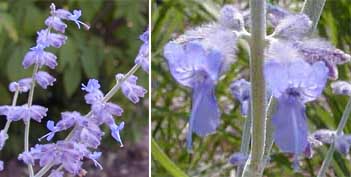
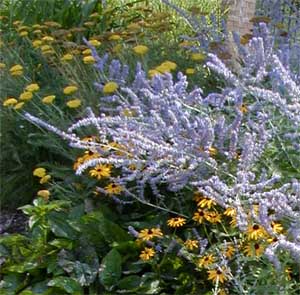
Landscape Use of Russian Sage
Russian sage can be used in the middle or back of the border or cottage garden or in many other places in the landscape. It combines well with ornamental grasses and white or yellow-flowered perennials, especially white phlox, Rudbeckia (black eyed Susan) and coreopsis. Other possible combinations include red-leaved shrubs or dark green foliage plants for contrast, or blending with other silver-leaved plants.
The silvery foliage and open architecture add an almost-Mediterranean feel to the landscape. It can also be useful as a filler plant or for separating stronger colors. Use it as a specimen in small areas, in massed plantings to intensify its presence in large spaces, or in a long, wide row as a divider planting.
Cultivars of Russian Sage
The species grows 3 to 4 feet tall, producing lavender blue flowers all summer on aromatic, gray-green leaves and gray-white stems. It is quite drought resistant once established. The flowers are attractive to bees and other insects. Cultivars are generally superior to seed grown plants. The Chicago Botanic Garden published an evaluation of their trial of Russian sage in 2020.
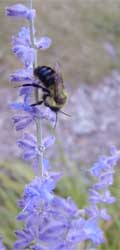
- ‘Blue Spire’ is an upright form with deeply lobed leaves. It reaches a height of 3 feet. The deep purple flowers are borne on large panicles.
- BLUE SPRITZER™ (cultivar ‘Balperobritz’) was rated excellent in Chicago Botanic Garden trials. It features light lavender-blue flowers, with entire, oval-shaped leaves and grows 30 inches tall by 32 inches wide.
- ‘Denim ‘n Lace’ has lightly lobed leaves, tall spikes of purple flowers, and grows 33 inches tall by 48 inches wide. It received an excellent rating in Chicago Botanic Garden trials.
- ‘Filigran’ is an introduction from Germany’s Ernst Pagels. This variety has fine, highly lobed foliage, giving the plant an almost lacy appearance. The bright blue flowers are borne all summer on upright 2-3 foot spikes.
- LITTLE LACE™ (cultivar ‘Novaperlac’) has medium lavender-blue flowers, highly lobed leaves, and grows 32 inches tall by 38 inches wide. It received an excellent rating in Chicago Botanic Garden trials.
- ‘Little Spire’ is has a compact habit, growing only to about 2 feet tall.
- ‘Longin’ has stiff stems and an upright, formal growth habit and light lavender purple flowers. It grows about 4 feet tall and wide.
General Care of Russian Sage
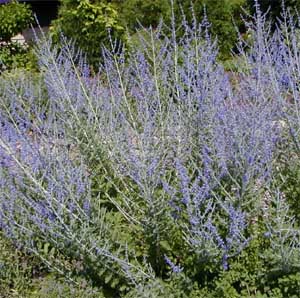
Plant Russian sage in full sun and well-drained soil, spacing the plants about 18 inches apart. Container-grown plants are best planted in early spring, setting them at the same depth as they were in the pot, but they can be planted out through the summer until one month before a hard killing frost. Small plants may be slow to establish. Water regularly during the first growing season to establish a deep, extensive root system. After the plants are established, they tolerate drought very well.
Once well-established, Russian sage is easy to grow, with essentially having no disease or insect problems. The plants tend to flop a little, especially when young. This provides an informal look to the landscape. To keep plants more upright, plants can be staked or planted near other plants that will support them.

Good drainage and aeration will enable the plant to survive wet winters. Plants will rot if the soil is too moist. Leave the old stems on through winter and cut them down to about a foot in the spring to keep the plants from getting woody (which can result in a reduction in foliage and flower quality). Fertilize before new growth begins in spring.
Propagation of Russian Sage
Russian sage can be grown from seed, though height, flower color, and leaf shape of the seedlings may vary considerably. Sow seed at any time of the year, just covering the seed with medium. Germination usually takes 1-4 months at a optimum temperature of 60-65 ºF. An initial cold treatment for 10 days to 6 weeks at 35-44 ºF may enhance germination. Transplant the seedlings when they are large enough to handle, being careful not to damage the roots. Harden off the seedlings before planting in the garden, preferably in late spring.
To increase named cultivars, taking 3-4 inch long softwood cuttings in summer is the best method. Propagation by division is possible, but slow.
– Susan Mahr, University of Wisconsin
Last Update: Allen R. Pyle, UW-Madison Extension, 2025

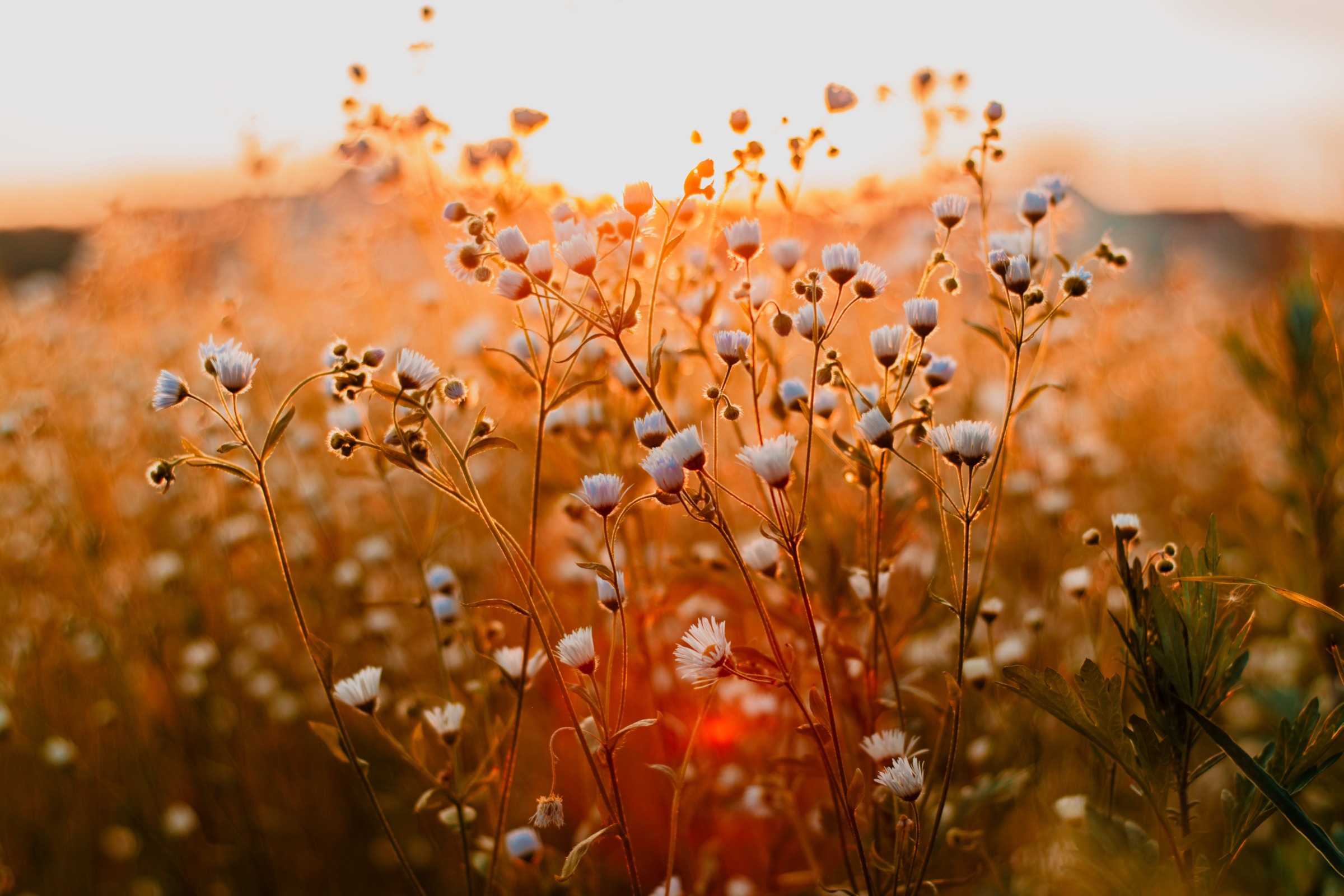
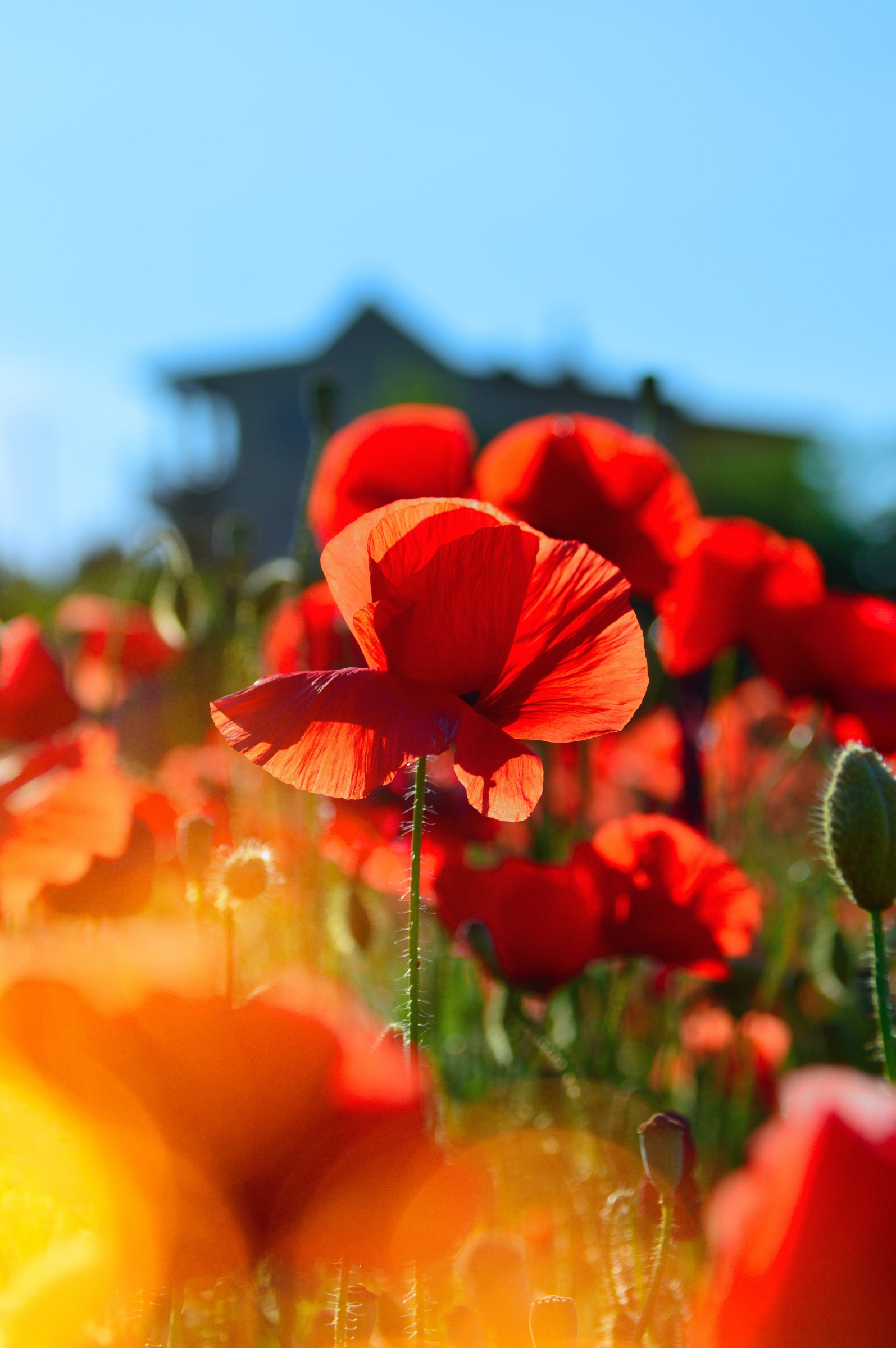
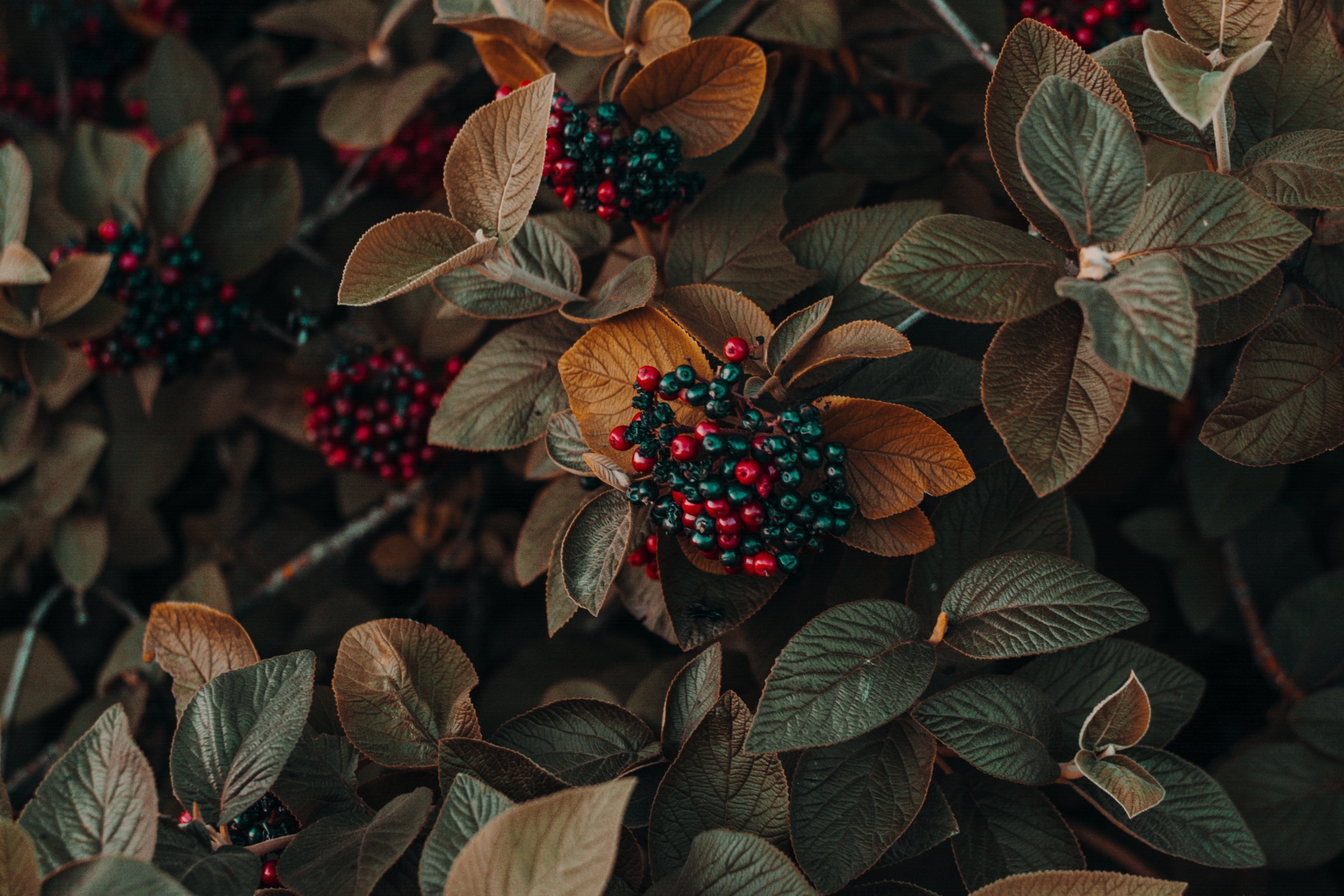
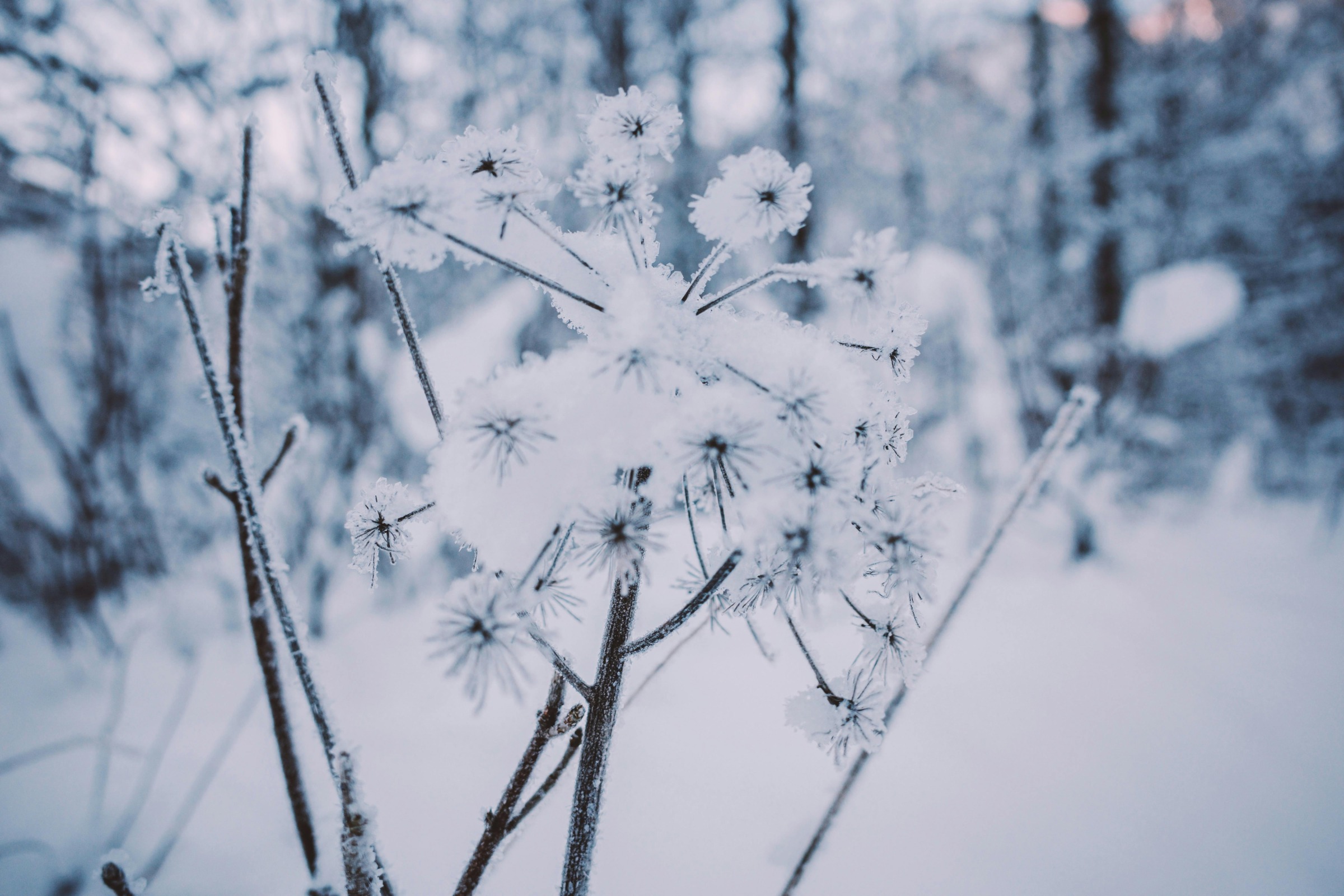
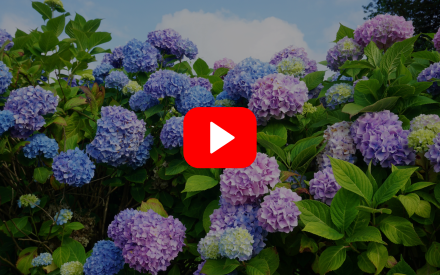 ▶︎ Watch: Hydrangeas: Know Them and Grow Them
▶︎ Watch: Hydrangeas: Know Them and Grow Them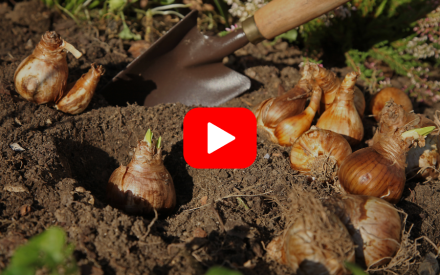 ▶︎ Watch: Fall Bulb Planting
▶︎ Watch: Fall Bulb Planting Aster, Symphyotrichum spp.
Aster, Symphyotrichum spp.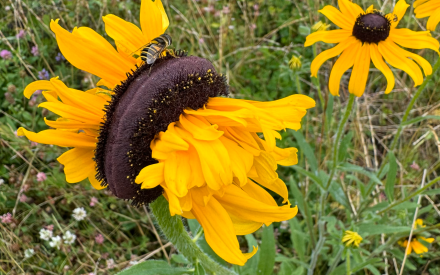 Fascinating Fasciation
Fascinating Fasciation


